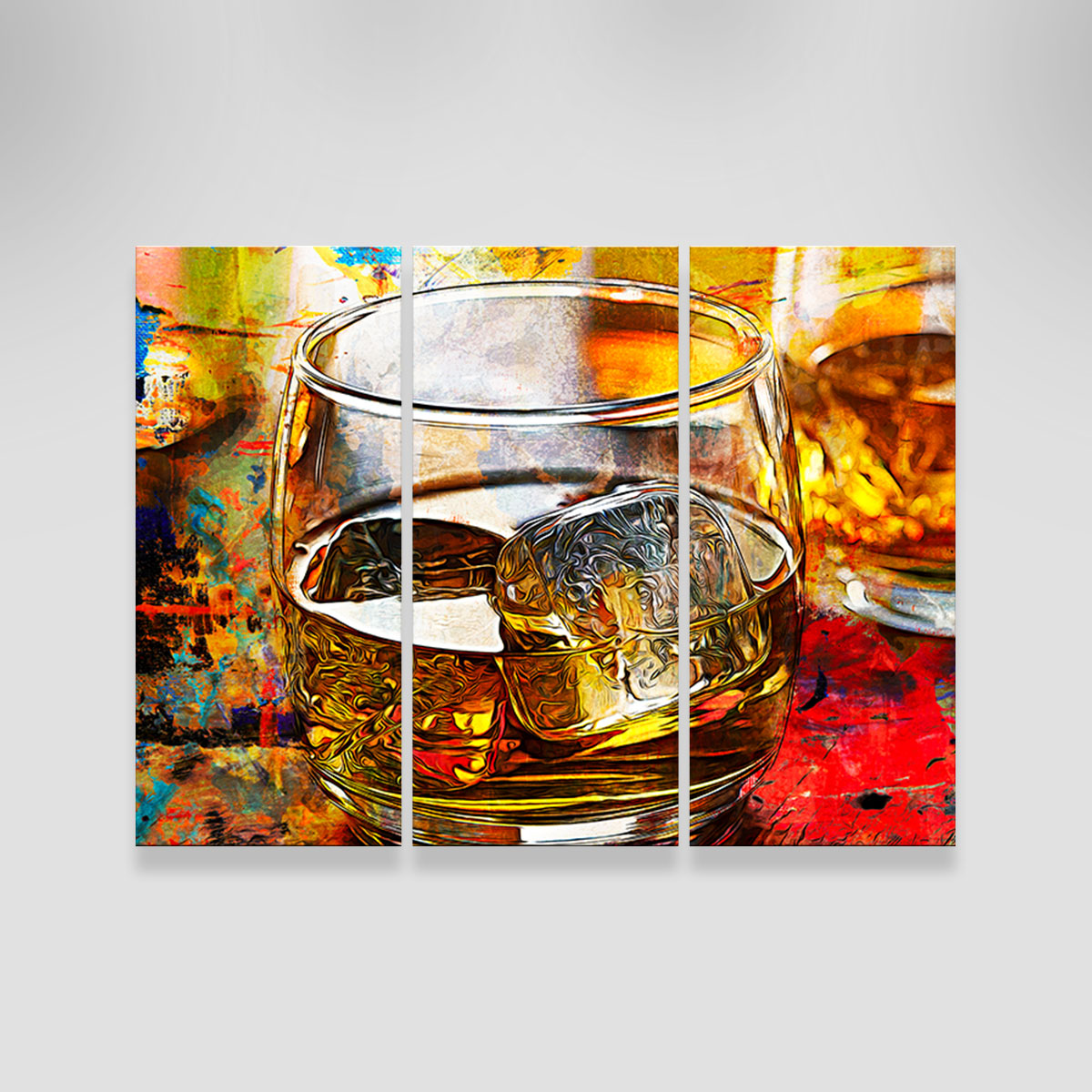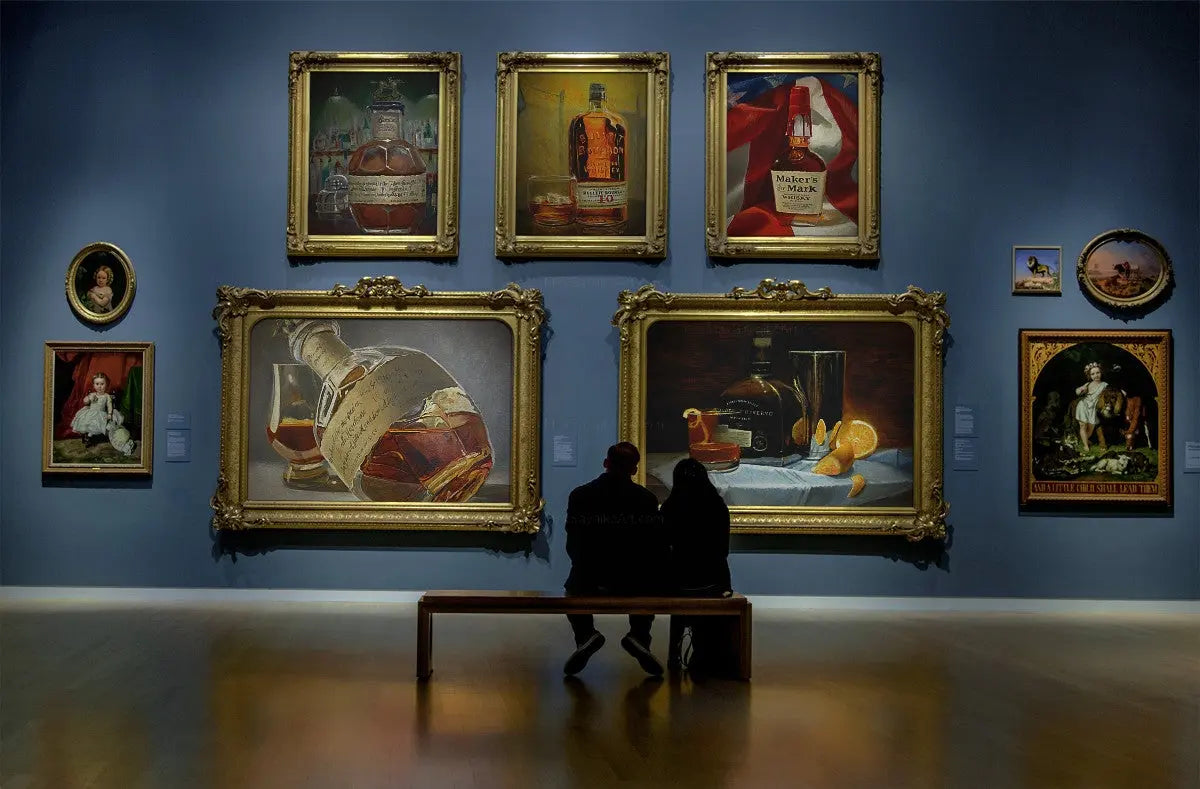Introducing the Beauty of Bourbon Art: A Homage to Craft Distillers
The Value of Whiskey Art in Celebrating Heritage and Workmanship in the Beverage Industry
The intricate relationship between whiskey art and the event of heritage and workmanship within the drink industry can not be overemphasized. Through thoughtfully made tags and containers, whiskey brands envelop their historical origins and the artisanal abilities that specify their manufacturing approaches. This creative measurement not only boosts market appeal however likewise works as a channel for social storytelling, cultivating a much deeper connection between the craft and the customer. As we check out the different elements of this subject, fascinating questions about the influence of contemporary trends on typical practices develop, prompting more evaluation.
The Historic Origins of Whiskey
At the heart of scotch's appeal exists an abundant tapestry of historic origins that map back to old civilizations. The origins of scotch can be linked to the purification practices of the Sumerians and Babylonians around 2000 BCE, where early kinds of fermented grain beverages began to emerge. Nevertheless, it remained in the Middle Ages that the art of distillation evolved considerably, particularly in Ireland and Scotland, causing the creation of scotch as we understand it today.
The term "whiskey" itself originates from the Gaelic word "uisce beatha," suggesting "water of life." This expression underscores the social importance of bourbon in Celtic cultures, where it was usually related to rituals, celebrations, and public bonding. By the 15th century, purification became an identified craft within monastic neighborhoods, leading the way for the facility of legal distilleries.
As profession routes increased, whiskey's appeal expanded, going beyond regional borders and catching the passion of aficionados worldwide. Realism Art. This historic journey shows not just the workmanship behind whiskey production however additionally its essential function in social and cultural contexts, marking it as a substantial beverage throughout history
Artistic Expression in Branding
Bourbon branding stands as an engaging crossway of virtuosity and business, where visual identification plays an important role in shaping consumer understanding. The visual appeals of whiskey tags, product packaging, and advertising and marketing products reflect not just the brand's tale yet additionally its core worths and heritage. Through artistic expression, distilleries convey a narrative that resonates with customers, stimulating feelings and stimulating links.
Making use of color, typography, and images in branding serves to separate products in a saturated market. As an example, standard themes might stimulate a sense of authenticity and workmanship, while contemporary styles can indicate innovation and forward-thinking. This tactical creative instructions improves brand acknowledgment and commitment, permitting consumers to build a personal connection with the scotch they select.
Additionally, imaginative expression in branding usually serves as an event of regional heritage. Distilleries frequently integrate neighborhood symbols or historical references right into their designs, producing a local color that invites consumers to take part in a broader social experience. Ultimately, the virtuosity behind scotch branding not only enhances visual appeal yet likewise improves the general narrative of the brand name, promoting a deeper appreciation for the workmanship and heritage ingrained in each bottle.
Workmanship in Bottle Layout
The creativity noticeable in scotch branding expands beyond aesthetic identity to encompass the craftsmanship associated with bottle design. Each bottle works as a vessel not just for the spirit within, yet additionally for the tale it outlines its high quality, custom, and origin. The style process needs careful focus to detail, as aspects such as product, shape, and closure contribute dramatically Source to the general perception of the whiskey.
Craftsmanship in container style entails selecting top quality glass that can enhance the bourbon's shade and quality, while also offering a tactile experience for the customer. The shape of the bottle should be both functional and aesthetically appealing, often reflecting the heritage of the brand name. Lots of distilleries opt for one-of-a-kind shapes or printed logos that evoke a sense of credibility and history.
Additionally, the label design and typography play a vital role in communicating the brand name's story. Limited Edition. A well-crafted bottle not only mesmerizes the customer's eye however also reinforces the brand name's commitment to quality and practice. In this means, the craftsmanship of container layout comes to be an essential facet of the bourbon experience, merging virtuosity with an extensive respect for heritage
Cultural Importance of Whiskey Art
Celebrating tradition and workmanship, the social significance of whiskey art goes beyond plain visual appeals, intertwining with the historic and social narratives of the areas where it originates. Each bottle works as a canvas, showing the special stories, mythology, and traditions that have formed neighborhood whiskey-making methods. The elaborate layouts frequently show the heritage of the distillers, incorporating icons and themes that resonate with the culture and values of their communities.
On top of that, scotch art plays an important duty in communal gatherings and celebrations, working as a tangible link in between individuals and their shared experiences. By valuing the virtuosity in scotch product packaging, consumers grow a much deeper understanding and regard for the craft, ultimately enriching their pleasure of the drink itself.
Modern Trends in Scotch Discussion
Recently, the presentation of scotch has progressed to show contemporary preferences and trends while still honoring conventional workmanship - Limited Edition. Distilleries are progressively concentrating on visual aspects that boost the general alcohol consumption experience, linking the gap in between heritage and modernity
Innovative container styles have actually arised, commonly including lasting products and imaginative tags that tell engaging stories. Numerous brands now work together with regional artists, infusing their items with unique visual expressions that resonate with customers. In addition, limited-edition launches are often packaged in collectible containers, adding worth and charm for lovers.

Final Thought
To conclude, scotch art functions as a crucial conduit for expressing the heritage and workmanship integral in the drink sector. Via intricate branding, cutting-edge container layouts, and culturally significant creative components, whiskey brand names successfully recognize their traditions and get in touch with consumers. This creative story not only elevates the recognition of whiskey yet additionally reinforces area identification and pride among manufacturers. Eventually, bourbon art plays a crucial role in preserving and commemorating the abundant cultural tapestry of whiskey-making.


Workmanship in container layout includes picking top quality glass that can boost the bourbon's shade and clarity, while likewise giving a responsive experience for the consumer. In this means, the craftsmanship of container layout ends up being an important element of the whiskey experience, merging creativity with an extensive regard for heritage.
In conclusion, whiskey art offers as an important conduit for expressing the heritage and craftsmanship integral in the drink industry.